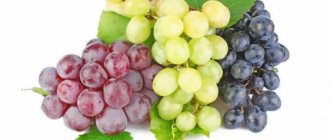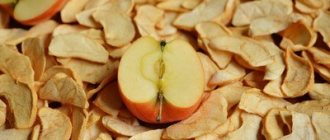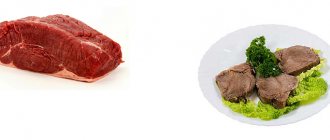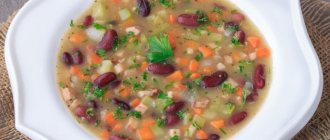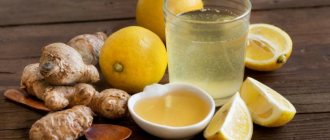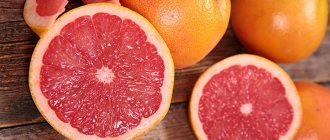Historical data on the cultivation of grape plants goes back to ancient times. For the first time, grapes were mentioned in documentary Babylonian and ancient Egyptian sources, which sang a song of praise to these berries. The splendor of the sweet taste of the fruits and the wonderful drink obtained as a result of their processing were appreciated by people.
For many centuries, residents of the Mediterranean coast have dreamed of making grape berries larger, sweeter and brighter. As a result, a large number of varieties can be seen on modern store shelves. They have differences in color, shape, taste, as well as in sugar content and other distinctive features. In such abundance, even the most picky gourmet can easily find the grape product that fully meets all his desires and needs.
Kishmish grapes differ from other fruits in the complete absence of seeds in the pulp
According to statistical data, the most popular grape variety in world history is the one called raisin. This varietal variety, in comparison with other varieties, has berries that are not as large in shape, but their sugar level is very high. Kishmish grapes differ from other fruits in the complete absence of seeds in the pulp, since they are very small in shape and therefore completely invisible to the human eye.
Description of popular varieties
Kishmish grapes have a number of popular varieties:
- Golden (Radiant). The ripening period of the variety is 120-140 days. It has a bright, pleasant taste and is suitable for use in winemaking. The clusters are large, cone-shaped, 35-45 cm long. The weight of one bunch reaches 1 kg. The fruit looks like this: it has the shape of an ellipse, light red or pink color.
- Zaporozhye. An early ripening variety that is characterized by good tolerance to temperature changes. Ripe fruits appear in early August. The weight of the bunches reaches 800 g, but there are also cases of giant formations whose weight exceeds 2 kg.
- Far Eastern. Frost-resistant variety. According to the description, it has small clusters weighing 400-600 g. It is preferable to eat it fresh.
- Ramminga. A variety similar to the Far Eastern one, which is characterized by the small size of the berries and their dark color.
- Novikova. It has small bunches weighing up to 300 g. It is used for processing into wine and juices. It tolerates transportation well due to its elastic berries and elastic peel.
https://youtu.be/https://www.youtube.com/watch?v=IWdhY_Mm_9Y
_
Consumption norms per day

In a normal diet, it is allowed to replace one of the dessert options with fresh grapes and eat about 200 g of them per day. This amount will not harm a healthy body.
Dry sultanas contain a lot of calories, so it is recommended to eat 20-25 pieces. per day to get maximum benefit. Since raisins have little fiber, a small handful will help restore strength and improve the functioning of the gastrointestinal tract even after poisoning or heavy meals with heavy food.
Composition and calorie content
Depending on the variety of raisin grapes, its calorie content ranges from 60 to 100 kcal per 100 g of product. If we translate this into more conventional measures, then a spoonful of berries will contain 3.7 kcal, and a standard glass will contain about 19 kcal. Berries contain 90% water.
Nutritional value of raisin grapes per 100 g:
- fats - 0-06 g;
- proteins - 2.4 g;
- carbohydrates - 66 g;
- nutritional fiber - 10 g;
- sodium - 115 g.
Based on the data, it is clear that Kishmish grapes have high nutritional value. This is taken into account when creating menus and diets.
Ripe berries contain acid:
- apple;
- lemon;
- amber.
Kishmish grapes have a number of antioxidants:
- flavonoid;
- quercetin;
- essential oils;
- chlorophyll;
- polyphenol.
A little about the history of grapes
In what century BC (of course) this perennial plant began to be grown has not been precisely established by scientists. But personally, it seems to me that this happened a very long time ago. Why? Yes, think for yourself. If in ancient times the Egyptians, Greeks and Romans held grand feasts where they drank wine in abundance, then what did they make it from? That's right, from grapes. And of course, since there was winemaking, there were grapes.
And it is precisely from those ancient times that the health benefits of grapevine fruits have been known. But I’ll tell you a secret, these berries not only contain useful substances, but also successfully reduce the impact of harmful ones on the human body. Moreover, as they say, the process of absorbing grapes slows down aging.
And of course, it is best to eat fresh berries. And in this regard, spending a few days on a grape diet during the fruit ripening season would be quite good for you and me. The rest of the time, it is useful to simply eat 200-300 grams of the mentioned fruits per day, and preferably separately from the main meal. Why? Doctors just say that this way vitamins and all sorts of nutrients are better absorbed. And I assure you, this, in addition to everything, will help strengthen the heart, kidneys, and other organs.
I am sure you will also be interested in my previous articles about the health benefits and harms of watermelon, strawberries, serviceberry and pomegranate.
Vitamin and mineral composition

Grapes have a positive effect on humans
100 grams of grapes contain the following vitamins:
- A (RE) - 5.5 mcg;
- PP (niacin equivalent) - 0.7 mg;
- E (TE) - 0.6 μg;
- B1 (thiamine) - 0.16 mg;
- B2 (riboflavin) - 0.1 mg.
Mineral composition:
- calcium - 78 mg;
- magnesium - 40 mg;
- iron and trace elements - 2.8 mg;
- phosphorus - 130 mg;
- potassium - 800 mg.
Calorie content of black grapes
Another variety of berry is no less common - the black variety. A prominent representative is Amur or Far Eastern grapes. But how many calories are in black grapes? There are 70 kcal per 100 grams of juicy fruit. The BZHU ratio is represented by the following indicators:
- proteins - 0.6 g;
- fats - 0.2 g;
- carbohydrates - 16.8 g.
Considering that one black grape weighs about 10 grams, the calorie content of 1 piece is 7 kcal. At the same time, there are 0.1 and 1.7 g of proteins and carbohydrates in it, respectively, but there are practically no fats.
ABC RECOMMENDS
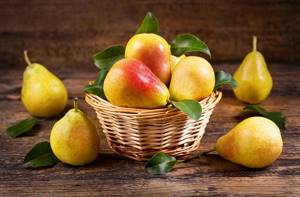
What is the calorie content of pears by variety: benefits and harm to the body, composition and BJU per 100 grams
Use of berries
The beneficial properties of raisin grapes allow it to be used as an additional treatment. Also, its use generally has a positive effect on a person: it has a good BJU indicator. Its glycemic index is 56.
Benefits and healing properties for the body:
- improving the functioning of the nervous system;
- eliminating stress and sleep problems;
- normalization of liver and kidney function;
- restoration of pressure during hypotension;
- useful in the fight against excess weight;
- improvement of metabolism;
- improving the functioning of the gastrointestinal tract;
- preventing the formation of thrombosis;
- improvement of the condition of respiratory tract diseases.
Also, the benefit of raisin grapes is that it helps in removing toxins from the body. The berries have a rejuvenating effect and increase the level of hemoglobin in the blood. Eating sultanas improves overall mood and prevents depression.
Calorie content of white grapes
The white variety is incredibly beneficial for the intestines and liver. But what is the energy value of this natural sweetness?
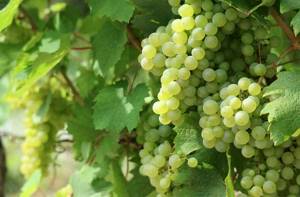
Photo source: shutterstock.com
Energy value of 100 grams of white grapes:
- kcal - 69;
- proteins - 0.7 g;
- fats - 0.2 g;
- carbohydrates - 18.1 g.
If 1 piece weighs about 10 grams, then it contains 6.9 kcal, carbohydrates and proteins - 1.8 and 0.07 grams, respectively, and fat indicators can not be taken into account at all.
Harm and contraindications
Eating sultanas is harmful if:
- disorders of the gallbladder;
- pancreatitis;
- stomach ulcer.
The fruits are also contraindicated for patients with diabetes. The reason for this is the large amount of sugars in the berries, which can harm the body. It is contraindicated for everyone to eat too many grapes at a time: this causes severe abdominal pain, diarrhea and flatulence.
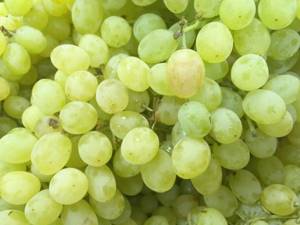
You should not eat grapes if you have a stomach ulcer.
Kishmish is contraindicated for adults and children with dental diseases and other problems in the oral cavity. Berries contain large amounts of fruit acids, which destroy tooth enamel and harm gums.
Eating fruits during pregnancy is not prohibited, but excess sugar leads to early obesity in the child, which will cause problems during childbirth. They will benefit from 1 bunch per day.
To ensure that the antihydrins used to treat the bushes do not cause harm to human health, the bunches are thoroughly washed under running water. Dried berries are also coated with low-quality dyes during preparation, so when purchasing, pay attention to their appearance.
Grape diet
The grape diet, when carried out correctly, allows you to lose weight by two kilograms in four days.
Goal of the diet:
- Reducing body weight.
- Cleansing the body.
- Getting rid of toxins and waste.
- Reducing blood cholesterol levels.
- Prevention of diseases: Neurological; Oncological Cardiovascular.
- Saturation of the body with vitamins and microelements.
Secrets of the grape diet
When consuming grapes as a dietary food, it is advisable to use seedless varieties with thin skins.
When using grapes with seeds, they do not need to be eaten due to a possible fixative effect on the intestines.
During the diet you must:
- Morning and evening contrast douches.
- Walk, or better yet, jog, at least three kilometers in the morning before breakfast, or in the evening after dinner.
- Morning and light evening exercises.
- Eight hours of normal sleep.
https://youtu.be/https://www.youtube.com/watch?v=a8STEd9uy4w
_
Kishmish in cooking
The calorie content of berries allows you to eat them in large quantities. Ripe raisin grapes are pleasant to eat raw. The reason for this is the elastic flesh and the absence of a seed. To wash off dirt from freshly picked bunches, it is better to soak them in a container of cool water for an hour.
The berries are also consumed dried or dried. To do this, they are subjected to temperature treatment, the description of which is similar to the method for preparing raisins, but does not take much time. The grapes are heated in the oven or cooked in a steam bath.
There is also a way to prepare pickled sultanas. These berries acquire a spicy flavor and become a little tart. For this purpose, take a large variety.
Grapes are used as a decoration for cakes, and they are also added to fruit salads and desserts. Juices and compotes are made from grapes, as well as jelly and homemade wine, which has a beautiful color.
Kishmish is also suitable for processing into jam or jam. For this, varieties with soft pulp and thin skin are used so that the product is without bitterness. Kishmish grapes increase the energy value of fermented milk products such as yogurt, cheese or cottage cheese.
Cooking raisins
One popular way to consume berries is as raisins. It has good nutritional value and minimal calories. Before preparing raisins from sultanas, prepare them:
- spoiled grapes are removed from the bunches;
- washed and dipped in boiling soda solution for 5 seconds;
- rinse in running water.
There are 2 ways to dry sultanas for raisins. For the first, light is used. The grapes are laid out in a thin layer on a wire rack and placed outside in the shade, where they dry for 3 weeks. They can also be dried under direct rays, but not longer than 15 days.
While drying, the grapes are mixed and turned over every 2-4 days. Ready raisins are determined by the shine on the surface of the berries, which become very elastic.
Raisins are also obtained through heat treatment. To do this, place the fruits on a wire rack and place it in the oven. The temperature should be minimal and the door should be open. Under such conditions, the grapes are dried for 2 hours and then taken outside, where they reach condition within 5 hours. The procedure is repeated for 5 days. Thermally produced raisins are darker and slightly caramelized.
How to choose and store correctly

Only ripe berries of good quality can bring maximum benefits to the body.
To choose the right product, follow our expert advice:
- choose berries with smooth, elastic skin without damage;
- a white coating on the surface of the fruit is normal;
- berries falling off the bunch are a sign of a stale product;
- The sultana season begins at the end of July and ends in September - this is the best period for purchasing.
Grapes are well stored, but they need to be packaged in “breathable” materials - paper, light fabric. Temperature conditions for long-term storage are not higher than +3...+5°C in a dry place.
Important! It has been noticed that dark grape varieties last longer than light ones.
